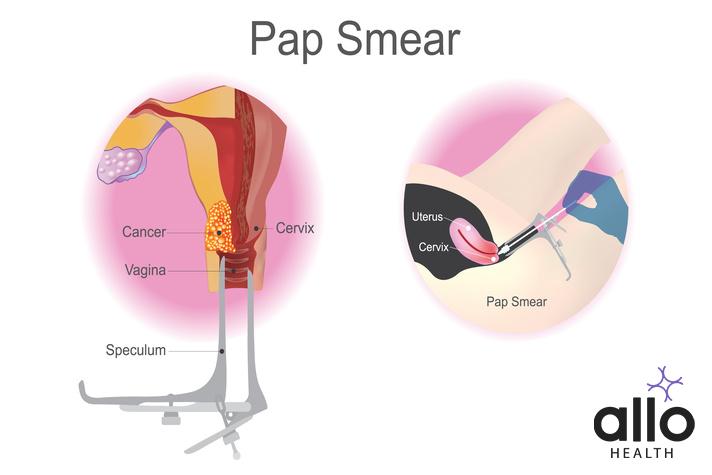How Is Human Papillomavirus (HPV) Diagnosed?

Allo Health is dedicated to personalized well-being, offering support and trusted information tailored to individual health goals. The platform emphasizes human-generated content, led by a distinguished medical team of experts, including physicians and sexual health specialists. Their commitment to credibility involves rigorous fact-checking, authoritative research, and continuous updates to ensure accurate, up-to-date information. Allo Health's unique approach goes beyond conventional platforms, providing expert-led insights and a continuous commitment to excellence, with user feedback playing a crucial role in shaping the platform's authoritative voice.

Dr Sanina Mansoor holds MBBS degree from Yenepoya university,Mangalore.She has 8 years of experience working as a medical officer at various health centres and medical colleges.
Why This Was Upated?
Our experts continually monitor the health and wellness space, and we update our articles when new information became available.
Updated on 26 February, 2025
- Article was updated as part of our commitment to diversity, equity, and inclusion.
"The following blog article provides general information and insights on various topics. However, it is important to note that the information presented is not intended as professional advice in any specific field or area. The content of this blog is for general educational and informational purposes only.
Book consultation
The content should not be interpreted as endorsement, recommendation, or guarantee of any product, service, or information mentioned. Readers are solely responsible for the decisions and actions they take based on the information provided in this blog. It is essential to exercise individual judgment, critical thinking, and personal responsibility when applying or implementing any information or suggestions discussed in the blog."
Human Papillomavirus (HPV) is a widespread sexually transmitted infection (STI) with significant health implications, ranging from genital warts to various types of cancer. Timely and accurate diagnosis of HPV is paramount for effective management and prevention of associated complications. In this extensive guide, we explore in detail the diverse methods employed in diagnosing HPV infection, encompassing clinical evaluation, laboratory tests, screening procedures, advanced diagnostic technologies, and the implications of diagnosis for patients and healthcare providers.
Before delving into the diagnostic methods, it’s crucial to grasp the basics of HPV. Human Papillomavirus encompasses a large group of viruses, over 200 strains identified, with approximately 40 types primarily affecting the genital area. While some HPV strains cause benign conditions such as genital warts, others, notably high-risk types like HPV 16 and 18, are strongly linked to cervical, anal, and other cancers.
Clinical Evaluation
Physical Examination:
- Description: Healthcare providers conduct a thorough physical examination to identify visible signs of HPV infection, such as genital warts or abnormal skin changes.
- Scope: Examination may involve inspecting the genital and anal regions, as well as other susceptible areas like the mouth and throat.
- Detailed Inspection: During the examination, healthcare providers carefully observe for any abnormalities, noting the size, shape, colour, and texture of any lesions or growths.
Medical History Assessment:
- Description: Obtaining a detailed medical history aids in assessing risk factors and symptoms of HPV infection.
- Inquiry: Healthcare professionals inquire about sexual activity, previous STI diagnoses, vaccination history, and relevant symptoms or concerns.
- Family History: Additionally, providers may inquire about family history of HPV-related conditions or cancers, as genetic predisposition can play a role in susceptibility to certain HPV strains.

Laboratory Tests
Pap Smear Test (Pap Test):
- Description: Pap smear is a screening test used to detect abnormal changes in cervical cells, indicating HPV infection or pre-cancerous conditions.
- Procedure: During a Pap smear, cells are collected from the cervix and examined under a microscope to identify any abnormalities.
- Frequency: Pap smears are typically performed every three years for individuals aged 21 to 65, although screening intervals may vary based on individual risk factors and healthcare guidelines.
HPV DNA Test:
- Description: HPV DNA testing identifies the presence of high-risk HPV strains in cervical cells, providing a sensitive method for HPV infection detection.
- Procedure: Samples of cervical cells are collected and tested for HPV DNA using molecular techniques like polymerase chain reaction (PCR) or hybrid capture assays.
- Indications: HPV DNA testing may be recommended as a primary screening tool for women aged 30 and older, in conjunction with Pap smears, or as a follow-up test for individuals with abnormal Pap smear results.
Biopsy:
- Description: In cases of abnormal findings from Pap smears or HPV DNA tests, a biopsy may be necessary to evaluate cellular changes and determine further treatment.
- Procedure: A tissue sample is collected from the affected area (e.g., cervix, genital warts) and examined under a microscope for signs of HPV-related abnormalities or cancer.
- Types: Biopsies may be performed using various techniques, including colposcopy-guided biopsy, punch biopsy, or excisional biopsy, depending on the location and size of the lesion.
Screening Procedures

Cervical Cancer Screening:
- Description: Routine cervical cancer screening aims to detect abnormal cervical cell changes early, facilitating timely intervention.
- Tests: Screening methods include Pap smears, HPV DNA testing, or a combination based on age, risk factors, and guidelines.
- Importance of Screening: Cervical cancer screening has significantly reduced the incidence and mortality of cervical cancer, making it a cornerstone of preventive healthcare for women.
Anal Cancer Screening:
- Description: Individuals at increased risk of anal cancer, such as men who have sex with men (MSM), undergo anal cancer screening to detect abnormal anal cell changes.
- Tests: Screening may involve anal Pap smears, HPV DNA testing, or high-resolution anoscopy (HRA) for further evaluation.
- Barriers to Screening: Despite the increased risk of anal cancer among certain populations, such as MSM living with HIV, anal cancer screening remains underutilised due to lack of awareness, stigma, and limited access to healthcare resources.
Oropharyngeal Cancer Screening:
- Description: Screening for oropharyngeal cancer targets individuals at high risk of HPV-related throat cancer.
- Tests: Methods may include visual examination, biopsy, or imaging tests to assess suspicious lesions or masses.
- Challenges in Diagnosis: Diagnosing oropharyngeal cancer poses challenges due to the complex anatomy of the throat and the absence of routine screening programs. As a result, many cases are diagnosed at advanced stages, highlighting the need for improved detection strategies and awareness campaigns.
Advanced Diagnostic Technologies
HPV Genotyping:
- Description: HPV genotyping identifies specific HPV strains present in a sample, providing insights into infection type and potential cancer risk.
- Applications: Used in research, epidemiological studies, and clinical settings to tailor treatment and monitor HPV infections.
- Types of Tests: HPV genotyping assays vary in complexity and target different HPV strains, ranging from simple PCR-based tests to more comprehensive multiplex assays capable of detecting multiple HPV types simultaneously.
Molecular Biomarkers:
- Description: Molecular biomarkers detect HPV-related changes in cellular DNA or RNA, aiding in early cancer detection and risk assessment.
- Emerging Technologies: Advances in biomarker research hold promise for non-invasive HPV diagnosis and personalized treatment approaches.
- Examples: Biomarkers such as p16INK4a and E6/E7 mRNA have shown promise as indicators of HPV-related cellular changes and may serve as valuable adjuncts to traditional screening methods.
Implications of Diagnosis
Psychological Impact:
- Description: Diagnosis of HPV infection, particularly in cases involving high-risk strains or precancerous lesions, can have significant psychological effects on patients.
- Emotional Response: Patients may experience feelings of anxiety, fear, or stigma associated with the diagnosis, leading to emotional distress and concerns about their future health outcomes.
- Supportive Care: Healthcare providers play a crucial role in providing emotional support, education, and resources to help patients cope with the psychological impact of HPV diagnosis and navigate the treatment process.
Treatment Considerations:
- Description: Diagnosis of HPV-related conditions, such as genital warts or cervical dysplasia, necessitates appropriate treatment interventions to manage symptoms and prevent disease progression.
- Treatment Options: Treatment modalities may include topical medications, surgical procedures, or ablative therapies, depending on the severity and location of the lesions.
- Patient Education: Healthcare providers should educate patients about treatment options, potential side effects, and the importance of adherence to follow-up care to ensure optimal outcomes.
Partner Notification and Prevention:
- Description: HPV diagnosis underscores the importance of partner notification and prevention strategies to reduce the risk of transmission and future infections.
- Communication with Partners: Patients diagnosed with HPV should be encouraged to inform their sexual partners about the infection, discuss safe sex practices, and encourage partner vaccination if appropriate.
- Preventive Measures: In addition to partner notification, preventive measures such as condom use, HPV vaccination, and regular screening are essential for reducing the burden of HPV-related diseases and preventing transmission within the community.
Accurate diagnosis of Human Papillomavirus (HPV) infection is critical for effective management and prevention of associated health complications. Clinical evaluation, laboratory tests, screening procedures, and advanced diagnostic technologies play pivotal roles in identifying HPV-related abnormalities and guiding appropriate treatment interventions. By prioritizing regular screening, early detection, and comprehensive sexual health education, individuals can take proactive steps to safeguard their health and well-being in the face of HPV infection. Moreover, healthcare providers play a crucial role in supporting patients through the diagnostic process, providing education, emotional support, and personalized care to optimize health outcomes and promote overall well-being.








































